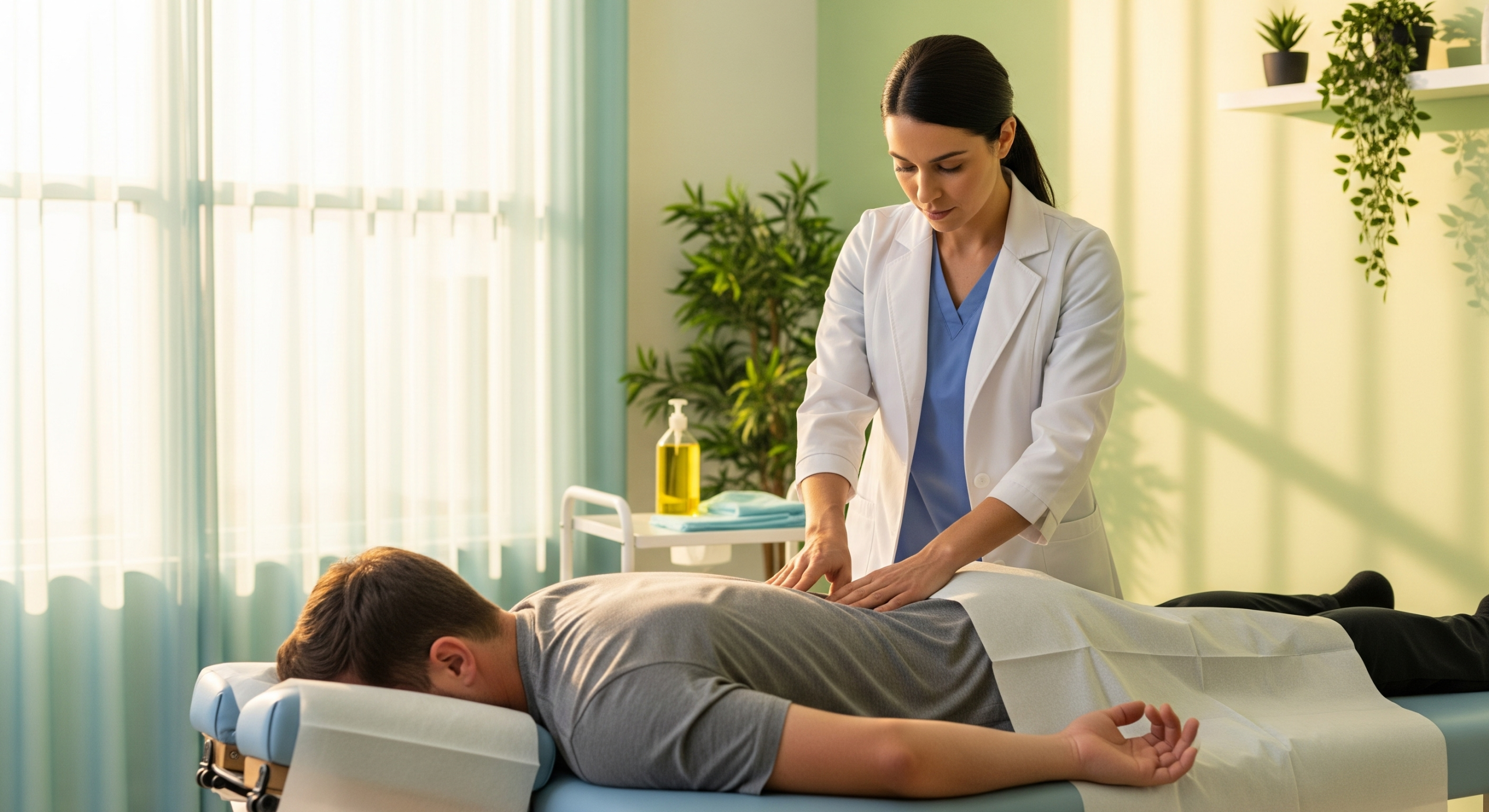Ever notice how your shoulders creep up and your back rounds more during the colder months? That’s not your imagination—it’s your posture reacting to the season.
Winter throws more than cold air at your spine. It bombards your body with subtle (and not-so-subtle) stressors that lead to stiffness, slouching, and misalignment. At Upright Posture, we often see a winter spike in postural issues, particularly those rooted in what we call seasonal posture triggers. These are environmental and behavioral patterns that mess with your body’s natural alignment.
Let’s unwrap what’s really behind your winter slump—and how to fix it before spring.
Jump to:
TLDR – Quick Guide
- Seasonal posture triggers in winter include cold temps, heavy clothing, less movement, and emotional stress.
- These factors contribute to rounded shoulders, forward head posture, and low back pain.
- Structural correction, like Advanced BioStructural Correction™, is key to long-term relief.
- Winter is the best time to fix your posture and prevent chronic pain from settling in.
Detailed Breakdown
1. Cold Weather = Shoulder Shrug Nation
When it’s freezing, you instinctively hunch your shoulders to stay warm. Over time, this leads to chronic tension in the neck and upper traps, and reinforces poor postural habits like forward head posture.
Fix it: Stay warm with a scarf, not your shoulders. Layer smartly so your muscles don’t brace constantly against the cold.
2. Heavy Coats and Bags
Thick winter gear and oversized coats restrict your range of motion, especially around your shoulders and spine. Add a heavy bag, and you’re looking at a postural imbalance cocktail—usually involving pelvic tilt and asymmetry.
Fix it: Opt for ergonomically designed outerwear and balance out your bag load. Better yet, reduce weight wherever possible.
3. Winter Sedentarism
Let’s be honest: when it’s dark at 4 p.m., movement drops off. Fewer walks, fewer stretches, and more Netflix. This lack of movement weakens stabilizing muscles and lets postural distortions settle in.
Fix it: Micro-movement matters. Set a timer to stretch or move every 30–45 minutes, even if you’re glued to the couch.
4. Stress and Slouching
Winter stress—from holidays to Seasonal Affective Disorder (SAD)—often manifests physically. Emotionally drained people tend to collapse their posture, reducing lung capacity and creating spinal stress.
Fix it: Practice deep breathing exercises and stay aware of your posture when you’re tired or anxious. Structure affects state of mind—and vice versa.
5. Skipping Posture-Supportive Routines
Many clients drop physical therapy, chiropractic visits, or posture work in winter, waiting until pain gets “really bad.” But those lost months let misalignments build into bigger problems.
Fix it: Posture correction is a year-round commitment. If you’ve already slouched your way through January, it’s not too late—especially with targeted solutions like Advanced BioStructural Correction™.
Key Takeaways
- Winter intensifies postural stress through cold, stress, and inactivity.
- The result? More slouching, tension, and long-term misalignments.
- Quick fixes (like stretching) help, but don’t address root skeletal issues.
- Professional alignment treatments, such as ABC™, reverse the structural cause.
- Don’t wait for spring cleaning—start your spine reset now.
FAQs
1. Why is my posture worse in winter?
Cold weather triggers shoulder hunching, heavy coats restrict movement, and reduced activity weakens postural muscles—all contributing to worse alignment.
2. Can winter stress affect posture?
Yes. Emotional stress often causes you to physically collapse your posture, leading to poor breathing, tension, and spine strain.
3. What are quick ways to improve posture in winter?
Use scarves to keep warm without hunching, do short mobility routines indoors, and stay aware of slouching while seated or scrolling.
4. Should I stop chiropractic care in winter?
No. Winter is when your body needs it most due to seasonal triggers. Maintaining alignment helps prevent seasonal slumps from becoming chronic.
5. How does Advanced BioStructural Correction™ help?
ABC™ addresses the skeletal misalignments caused by seasonal habits. Unlike massage or exercise alone, it directly corrects the body’s structural imbalances.






